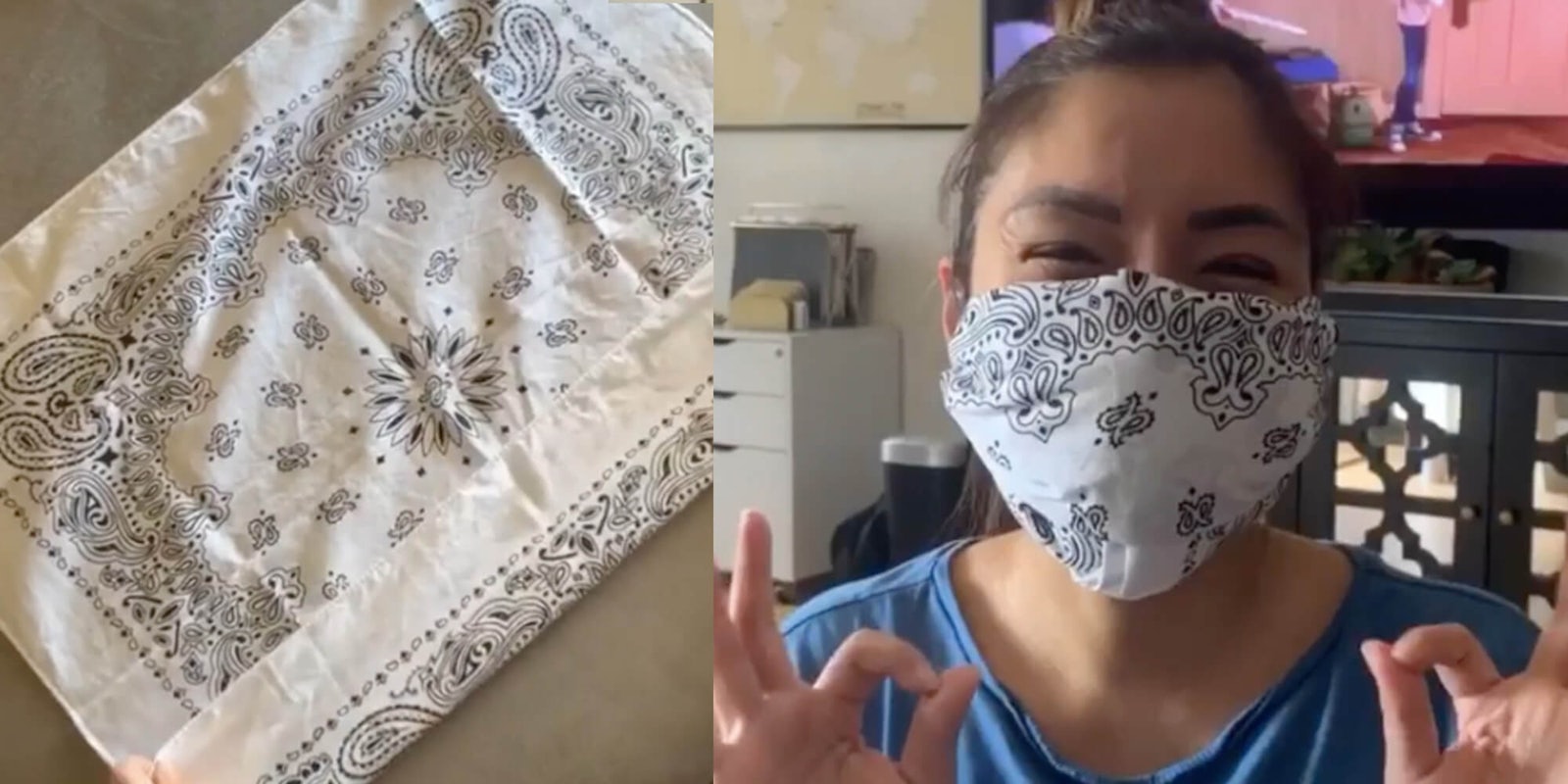The best thing any of us can do during these times is to stay at home. Keeping our distance from others is the best way to slow the spread of the coronavirus until numbers become manageable and, eventually, a vaccine is distributed.
But sometimes, keeping to yourself entirely is not an option. If you need to take a trip to the grocery store, go to work, or venture out into the world for some other type of essential (and we do mean essential) errand, you’re going to want to make sure you have some sort of protective covering on your face.
The Daily Dot is committed to filtering the noise every day as COVID-19 seizes the internet’s attention worldwide. We bring you stories on everything related to the viral pandemic, from the state response to social media fallout, and all the technical flubs, emerging social trends, and disinformation in between. READ MORE ->
The Center for Disease Control (CDC) only recently started recommending Americans cover their faces when stepping out into the world. People aren’t supposed to use surgical or N95 masks—those are needed by healthcare workers to take care of people who are already infected with COVID-19. So how should you be covering your face?
DIY masks are the answer, but not all DIYs are made equally. Sewing is an option, and doctors have recommended materials and specifications to make what they currently believe to be the most effective possible mask in that fashion.
But if you don’t have access to the supplies you need to sew, or if you don’t know how, there’s an easy no-sew method for creating your own cloth mask with items you almost certainly have at home.
The short instructional video shows the creator using a bandana, but you can also take any breathable and washable cloth. You then fold it over several times, slip on two hair ties or rubber bands, fold the ends in again so the cloth is now the appropriate size and the elastic is at the edges, and there’s your mask.
Julie Eigenmann, who made the video, also suggests adding an appropriate filter to the middle if you have access to one.
Surgeon General Jerome Adams also released a video via the CDC’s YouTube channel using a nearly identical method. So the technique seems to have the stamp of approval from the nation’s doctor.
But it’s important to note that these masks do not provide complete protection against coming into contact with coronavirus droplets, or expelling them if you yourself are already sick and don’t know it yet. But if you HAVE to go out into the world, some protection—for yourself and for the people around you—is always better than none.
Other folks who saw Eigenmann’s video had some suggestions of their own to add, which may help some people looking to DIY.
And some are sharing how their own turned out after following this helpful guide.
But if you do make one of these DIY masks, don’t forget to wash it frequently! After every use if possible. If your mask does come into contact with coronavirus particles, you don’t want to keep them around, or allow them to spread any further.
And when you can, as always, just stay home.
READ MORE:


